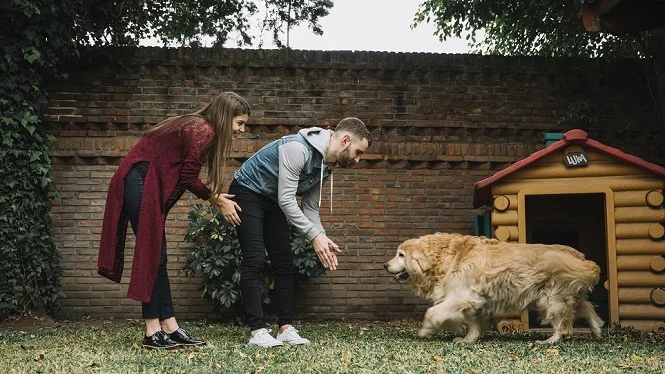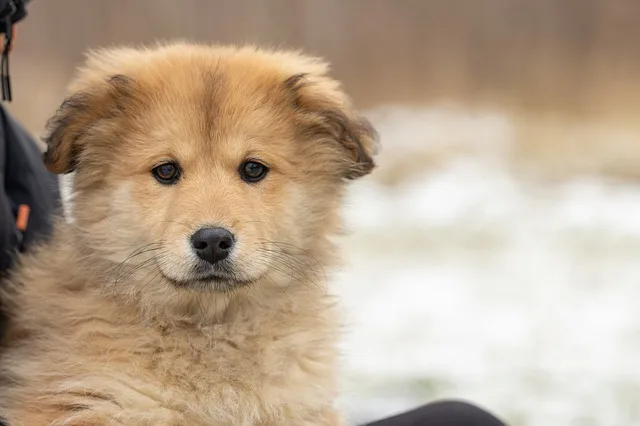Dogs are known for their love and care for their family members. But there are instances where a dog may show odd behavior. An example of such behavior is growling at a specific family member. This behavior can be a source of worry. It can also leave the family member feeling rejected or afraid. Thus, In this piece, We will explore the main reasons why does my dog growl at one family member. Also, we provide insights into how to address this problem. So, why does my dog growl at one family member? Let’s find out.
Understanding Canine Behavior
Before diving into the reasons behind a dog’s growling behavior. Let’s understand the basics of dogs’ behavior. Dogs interact in several ways. It includes body language, vocalizations, and facial movements. Growling is one of the ways dogs show their pain or anger. It serves as a warning cue. It shows that the dog is feeling scared or nervous.

Possible Reasons for Dog Growling
1. Lack of Familiarity
One possible reason why a dog may growl at a specific family member is a lack of comfort. Dogs are creatures of habit and often feel more comfortable around known people. If a family member is new or hasn’t spent much time with the dog. The dog may view them as a possible threat. It can result in defensive behavior like growling.
2. Negative Experiences
Dogs have a good memory. They can associate certain people with bad events. If a family member has caused the dog pain, fear, or discomfort in the past. The dog may growl as a protective reaction to prevent a repeat of those bad experiences. It’s handy to identify and handle any possible factors. That may have caused the bad connection.
3. Protective Instincts
Dogs are known for their protective feelings toward family members. If a dog feels that a particular family member is in danger. Or is in a weak state, it may bark as a protective measure. This behavior is also observable when a family member is sick, hurt, or mentally disturbed.
4. Possessiveness or Resource Guarding
When it comes to their resources, Dogs can show protective behavior. These resources include food, toys, and sleeping places. If a dog sees a family member as a possible threat to their assets, They may bark to set limits and protect their things. Resource guarding needs to be addressed through proper teaching and education.

5. Lack of Socialization
Insufficient socializing during a dog’s early growth phase can lead to behavioral problems. It includes growling at specific people. Dogs that haven’t been exposed to various people. Surroundings and situations may feel uncomfortable. They also feel afraid around new family members. Thus, gradual contact and positive feedback can help ease this habit.
Addressing the Issue of Dog Growling
If your dog is barking at one family member. It is crucial to address the problem. Thus, to ensure the well-being of both the dog and the family member concerned, Here are some steps you can take:

1. Identify the reasons: Observe your dog’s behavior. Try to identify any specific reason that may be causing the barking. Understand the root cause. It can help you create a suitable plan of action.
2. A guide from a Professional: If the barking continues or worsens. Consider getting advice from a dog teacher or animal behaviorist. They can examine the situation and provide personalized help. It helps to handle the problem.
3. Positively reward your dog: Use positive reward methods. It helps to create a good connection. This connection must be between your dog and the family member he is hissing at. Encourage the family member to give treats. Engage in play sessions or join in activities that the dog likes.

4. Gradual Exposure: Introduce the dog to the family member in a happy setting. Then slowly increase the exposure to dogs.
5. Patience and avoiding beating: Consistency is crucial when tackling behavioral problems in dogs. Ensure that all family members follow the same rules. They must maintain a patient approach throughout the process. Avoid beating or blaming the dog, as it can worsen the problem.
6. Make Clear Limits: Be Consistent in setting limits. Making rules for the dog’s behavior is useful. It can help all family members be on the same page. Apply uniform teaching methods to avoid misunderstandings and encourage good behavior.
7. It is necessary to speak with a doctor. A careful medical review can rule out any physical discomfort or pain. That may be contributing to the behavior.
FAQs on Why Does My Dog Growl at One Family Member
Here is the list of the most common questions.

Q1: How long does it take to fix a dog barking issue?
The time to fix a dog barking issue can vary based on several factors. It includes the dog’s age, past experiences, and the family member’s efforts. It is handy to be gentle and steady in applying the suggested tactics. Resolving the problem can take weeks or even months in some cases.
Q2: Should I punish my dog for growling at a family member?
Punishment is not a good approach. When a dog barks at a family member. It can increase the dog’s fear or nervousness. It also leads to more serious behavioral problems. Instead, focus on positive rewards. Acclimatize the dog to the family member in a controlled way.
Q3: Can a trained dog teacher help with the barking issue?
Contacting a professional dog trainer or animal behaviorist can be helpful. They can provide expert advice. Examine the situation and create a personalized training plan. It helps to solve the problem.
Q4: Can a lack of exercise contribute to dog biting behavior?
Poor exercise and mental activity can contribute to dog behavioral problems like barking. Regular exercise helps focus a dog’s energy, reduces stress, and promotes general well-being. Ensure your dog gets a suitable amount of exercise every day.
Q5: Can neutering or spaying help lower dog biting behavior?
Neutering or spaying your dog helps lower behavioral problems like violence. But it is not a sure answer for all cases of dog barking. Consult with your doctor to talk about the possible benefits and factors. That is related to surgeries for your dog.
Q6: What if the barking behavior continues despite my efforts?
A skilled dog teacher or animal behaviorist can gauge the situation. Provide extra methods, and he will work with you to solve the problem.
Q7: How do dogs know who their owner is in a family?
Dogs recognize their owners through various factors. It includes scent, voice, body language, time spent together, and positive reinforcement. They remember their owner’s unique scent. They are also familiar with their voice and body language. Consistent care, bonding activities, and positive experiences create a strong emotional connection. It allows dogs to identify their owners within a family.
Q8: Can my dog tell if I don’t like someone?
Dogs are observant animals and can often sense human moods. They are sensitive to minor cues such as body language, tone of voice, and general attitude. Dogs have a natural ability to read human feelings. They may change their behavior as per people’s personality.
Conclusion on Why Does My Dog Growl at One Family Member
Understanding why a dog growls at one family member is useful. It is the first step toward settling this behavior. It can be due to a lack of knowledge or bad experiences. The issue requires training. Thus, handling the problem requires patience, consistency, and positive feedback. Follow the tactics described in this piece. Ensure that you get professional advice when needed. So, you can build a peaceful and trusting relationship. Between your dog and all family members.

Take-Home Message
Understand why a dog growls at one family member. It requires careful examination of various factors. It includes trust, past experiences, resource guarding, health concerns, and training consistency. It helps to strengthen the bond between you and your dog.
For more detail: Click Here












